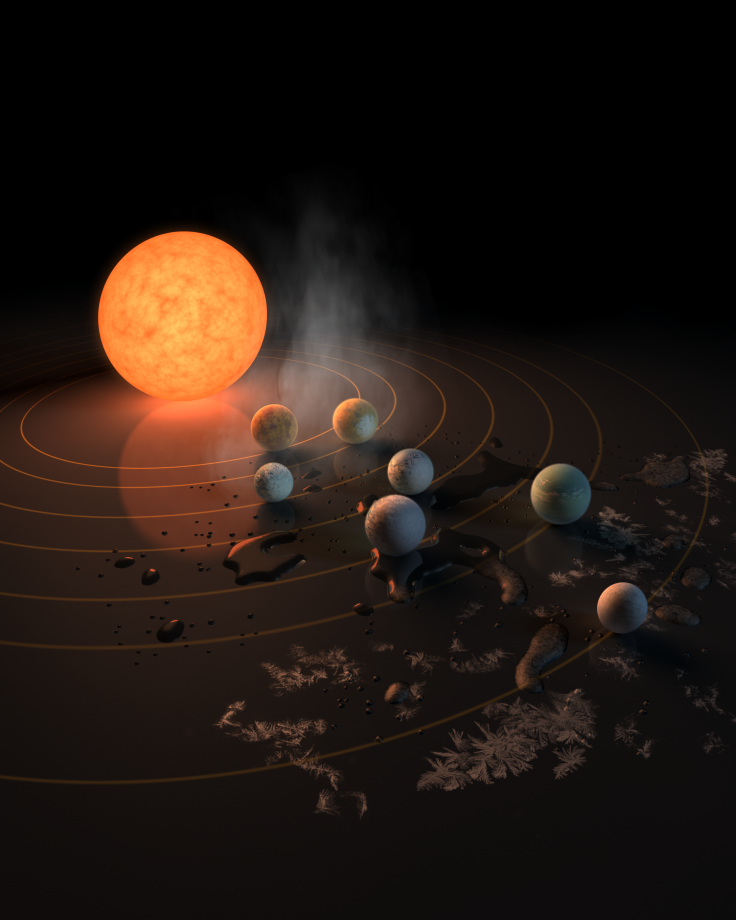What Is TRAPPIST-1? NASA Discovery Highlights Why Red Dwarfs Are The Best Place To Look For Alien Life

On Wednesday, NASA announced that it had found that a nearby star — TRAPPIST-1 — has seven Earth-sized planets orbiting it. In one fell swoop, the discovery made the TRAPPIST-1 a star with the largest number of Earth-sized planets around it and also one with the largest number of worlds that could support liquid water on their surfaces.
“This discovery could be a significant piece in the puzzle of finding habitable environments, places that are conducive to life,” Thomas Zurbuchen, associate administrator of NASA’s Science Mission Directorate, said in a statement. “Answering the question ‘are we alone’ is a top science priority and finding so many planets like these for the first time in the habitable zone is a remarkable step forward toward that goal.”
TRAPPIST-1, located just 40 light-years from Earth, is a red dwarf star. In order to confirm the presence of the exoplanets around it, astronomers used the Transiting Planets and Planetesimals Small Telescope (TRAPPIST) and the Very Large Telescope (VLT) in Chile and NASA’s Spitzer Space Telescope.
The finding, which significantly raises the chances of discovering life beyond our solar system, raises two key questions — what are red dwarfs and why have a vast majority of exoplanets discovered so far been found orbiting these stars?
Red dwarfs are the most common class of stars in the present-day universe, with some estimates pegging their prevalence at over 70 percent. Earth’s closest stellar neighbor, Proxima Centauri, is also a red dwarf. Although the term is widely used — even within the scientific community — it is not strictly defined, and is used to refer to stars in both the K- and M-type category (both of which include stars cooler than our sun).
“There is no true definition of red dwarfs,” astronomer Michaël Gillon from the University of Liège in Belgium told Space.com. “This term generally refers to dwarf stars with a spectral type ranging from K5V to M5V.”
The preponderance of red dwarfs, and, by extension, the preponderance of planets around red dwarfs, is a direct result of these stars’ extremely long lifespan, which exceeds the current age of the universe (roughly 13.8 billion years). The last generation of these stars is likely to remain aglow for 10 trillion years.
That is why, most of the exoplanets that scientists say hold the best promise for life as we know it orbit red dwarfs — Proxima b, Gliese 667 Cc, and now TRAPPIST-1b, c, d, e, f, g and h.
“The energy output from dwarf stars like TRAPPIST-1 is much weaker than that of our Sun,” Amaury Triaud from the Institute of Astronomy in Cambridge, U.K., said in a statement. “Planets would need to be in far closer orbits than we see in the Solar System if there is to be surface water. Fortunately, it seems that this kind of compact configuration is just what we see around TRAPPIST-1.”
© Copyright IBTimes 2024. All rights reserved.












